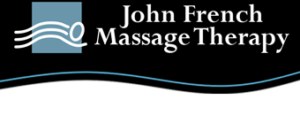Medical massage is targeted to a dysfunctional area or problem in the soft tissues of the body. Its primary focus is not relaxation or stress relief. It is usually for patients who are recovering from injuries or surgical procedures. A doctor will inform the client if he or she could benefit from massage therapy, as it is often used to help speed healing and recover quicker. Medically necessary massage therapy (e.g., headaches, sprains, edema, muscular pain) could be covered by a person’s health insurance plan. If massage therapy is covered then a doctor or chiropractor would write a scrip for you to give to the therapist who takes insurance.
After an injury has occurred, people usually avoid using those muscles until the injury has healed. During this time, with no use or movement of the affected area, these muscle groups become very stiff and out of shape. Also, other muscles may be overused to compensate for the guarding of the original injury. Medical massage therapy is used to slowly rehabilitate the unused and overused muscles. It helps to promote healthy movement and functioning of the newly healed area of the body while also preventing further injuries from occurring.
During a session, the massage therapist will manipulate the soft tissues of the body using various techniques like soft tissue massage, active and passive stretching, range of motion techniques, and possibly the use of other therapeutic modalities in support, such as hot or cold therapy. Medical massage is used to improve the general well-being of the client. Each session typically lasts between 45 to 60 minutes.
Medical massage is not a treatment for everyone. It is specifically designed for those individuals recovering from injury or surgery who need muscle rehabilitation. The massage should be carried out following the advice of a doctor to prevent any further injury to the healing area. Its goal is to use a series of manual therapy treatments to correct the affected areas of the musculoskeletal system, while reducing pain at the same time.
Some of the various techniques that may be used in combination with the Medical Massage are: lymphatic drainage, connective tissue massage, neuromuscular therapy, osteopathic manual therapies, eastern medicinal techniques, stretching and positional release techniques, reflex techniques, and trigger point therapies. The exact combination of therapies will depend on the specific needs of the client. The medical therapist would first do an assessment of the client and determine what they can do for the client within their scope of practice and competency. The patient may also be given a series of self-massage techniques or some kind of self care to be done at home. Medical massage and home exercises will further enhance recovery to good health and fitness.
Always consult your doctor and your therapist to see if massage or specific massage types are right for you.




